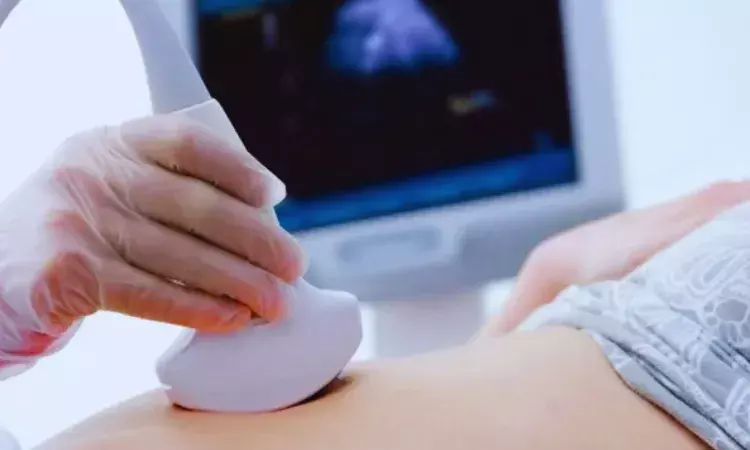- Home
- Medical news & Guidelines
- Anesthesiology
- Cardiology and CTVS
- Critical Care
- Dentistry
- Dermatology
- Diabetes and Endocrinology
- ENT
- Gastroenterology
- Medicine
- Nephrology
- Neurology
- Obstretics-Gynaecology
- Oncology
- Ophthalmology
- Orthopaedics
- Pediatrics-Neonatology
- Psychiatry
- Pulmonology
- Radiology
- Surgery
- Urology
- Laboratory Medicine
- Diet
- Nursing
- Paramedical
- Physiotherapy
- Health news
- Fact Check
- Bone Health Fact Check
- Brain Health Fact Check
- Cancer Related Fact Check
- Child Care Fact Check
- Dental and oral health fact check
- Diabetes and metabolic health fact check
- Diet and Nutrition Fact Check
- Eye and ENT Care Fact Check
- Fitness fact check
- Gut health fact check
- Heart health fact check
- Kidney health fact check
- Medical education fact check
- Men's health fact check
- Respiratory fact check
- Skin and hair care fact check
- Vaccine and Immunization fact check
- Women's health fact check
- AYUSH
- State News
- Andaman and Nicobar Islands
- Andhra Pradesh
- Arunachal Pradesh
- Assam
- Bihar
- Chandigarh
- Chattisgarh
- Dadra and Nagar Haveli
- Daman and Diu
- Delhi
- Goa
- Gujarat
- Haryana
- Himachal Pradesh
- Jammu & Kashmir
- Jharkhand
- Karnataka
- Kerala
- Ladakh
- Lakshadweep
- Madhya Pradesh
- Maharashtra
- Manipur
- Meghalaya
- Mizoram
- Nagaland
- Odisha
- Puducherry
- Punjab
- Rajasthan
- Sikkim
- Tamil Nadu
- Telangana
- Tripura
- Uttar Pradesh
- Uttrakhand
- West Bengal
- Medical Education
- Industry
Transverse views in ultrasound advantageous to identify increased nuchal translucency: AJOG

Providing pregnant patients with an estimation of the risk of fetal aneuploidies by first-trimester screening has become the standard of practice in many countries worldwide. An essential part of this examination, the so-called combined test, is the measurement of the nuchal translucency (NT), the hypoechoic area behind the fetal neck, a risk factor for trisomy 21, and a broad range of other chromosomal and nonchromosomal anomalies.
Accurate measurement is required for a combined test; however, in pregnancies undergoing NIPT, the relevant clinical information is whether the measurement is >3.5 or 3.0 mm, depending on the threshold that is chosen. Thus far, the measurement of the NT has always been obtained with a median sagittal view of the fetal neck, and this requires some effort and expertise. Authors Montaguti E, Rizzo R, Diglio J, et al aimed to evaluate whether transverse scans, which are easier to obtain because less dependent on the fetal position, allow the identification of an excessively enlarged NT.
This was a prospective study enrolling a nonconsecutive series of women who attended our outpatient clinic from January 2020 to April 2021 for combined screening and were examined by operators certified by the Fetal Medicine Foundation. In each patient, nuchal translucency measurements were obtained both from a median sagittal view and from a transverse view. A second sonologist blinded to the results of the first examination obtained another measurement to assess intermethod and interobsever reproducibility. This study aimed to investigate the ability of a transverse view of the fetal head to detect increased fetal nuchal translucency at 11 to 13 weeks of gestation.
A total of 1023 women were enrolled. An excellent correlation was found between sagittal and transverse nuchal translucency measurements, with a mean difference of 0.01 mm (95% confidence interval, -0.01 to 0.02). No systematic difference was found between the 2 techniques. The inter-rater reliability (intraclass correlation coefficient, 0.957; 95% confidence interval, 0.892-0.983) and intrarater reliability (intraclass correlation coefficient, 0.976; 95% confidence interval, 0.941-0.990) of axial measurements were almost perfect. Transverse measurements of 3.0 mm identified all cases with sagittal measurements of 3.0 with a specificity of 99.7%; transverse measurements of >3.2 mm identified all cases with sagittal measurements of 3.5 mm with a specificity of 99.7%. The time required to obtain transverse nuchal translucency measurements was considerably shorter than for sagittal measurements, particularly when the fetus had an unfavorable position.
This study suggested that measurement of the NT in transverse planes is reproducible and closely correlated with measurement in sagittal planes. In particular, the former accurately predicts excessive values of the latter. In 30% of fetuses, the NT could not be visualized in the transverse view, but in all these cases, the sagittal assessment was always within normal limits. An axial translucency of <3.0 and 3.2 mm effectively ruled out a sagittal translucency of 3 and 3.5 mm, respectively. The presence of internal septations was consistently associated with a sagittal NT of 3.5 mm.
Here, an axial measurement of <3.0 and <3.2 mm effectively ruled out a sagittal translucency 3.0 and 3.5 mm, respectively, with very high specificity. This would allow to greatly reduce the number of cases in which a sagittal view of the fetus needs to be obtained.
Source: Montaguti E, Rizzo R, Diglio J, et al. Increased nuchal translucency can be ascertained using transverse planes. Am J Obstet Gynecol 2022;227:750.e1-6
https://doi.org/10.1016/j.ajog.2022.05.057
MBBS, MD Obstetrics and Gynecology
Dr Nirali Kapoor has completed her MBBS from GMC Jamnagar and MD Obstetrics and Gynecology from AIIMS Rishikesh. She underwent training in trauma/emergency medicine non academic residency in AIIMS Delhi for an year after her MBBS. Post her MD, she has joined in a Multispeciality hospital in Amritsar. She is actively involved in cases concerning fetal medicine, infertility and minimal invasive procedures as well as research activities involved around the fields of interest.
Dr Kamal Kant Kohli-MBBS, DTCD- a chest specialist with more than 30 years of practice and a flair for writing clinical articles, Dr Kamal Kant Kohli joined Medical Dialogues as a Chief Editor of Medical News. Besides writing articles, as an editor, he proofreads and verifies all the medical content published on Medical Dialogues including those coming from journals, studies,medical conferences,guidelines etc. Email: drkohli@medicaldialogues.in. Contact no. 011-43720751


